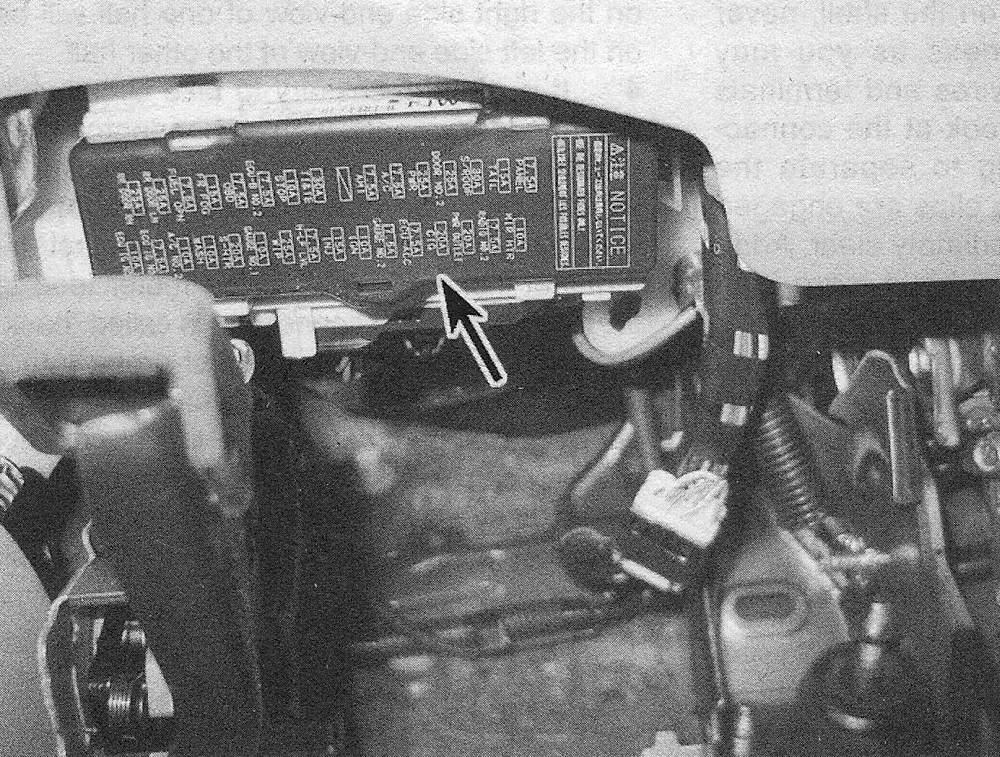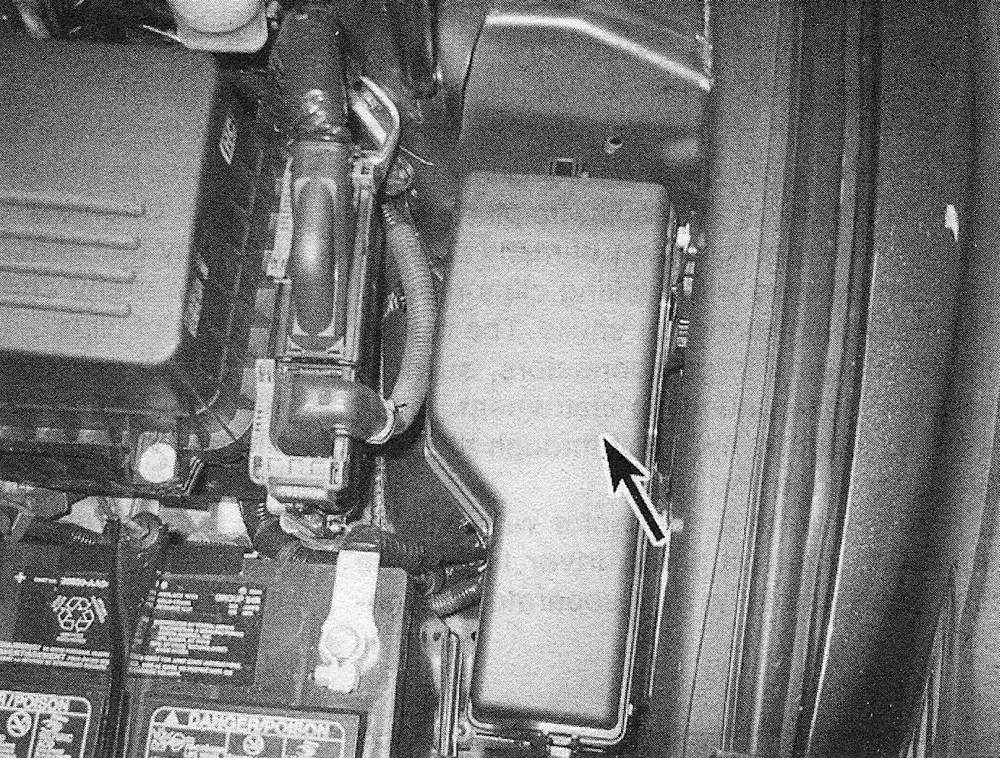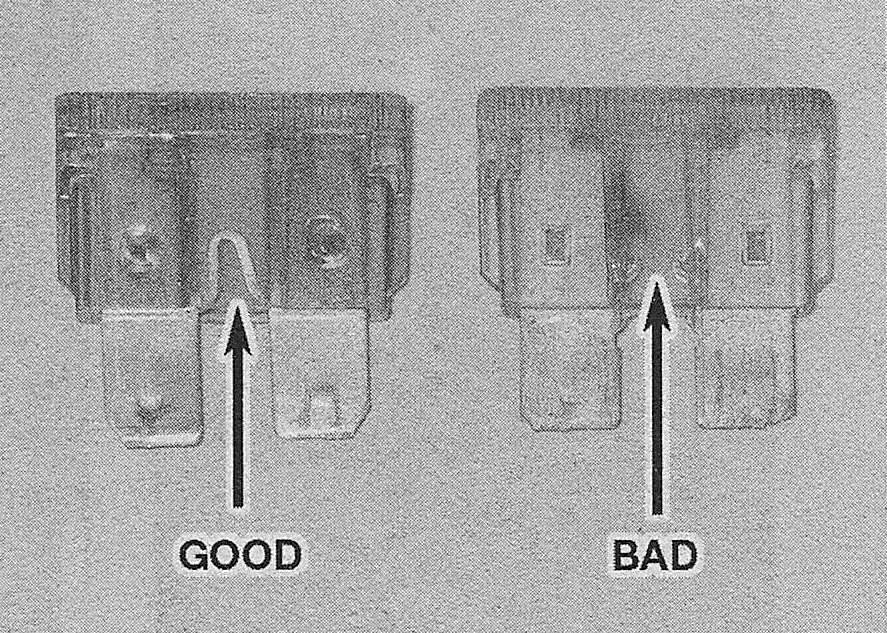Fuses and fusible links — general information
Fuses
1. The electrical circuits of the vehicle are protected by a combination of fuses, circuit breakers and fusible links. The main fuse/relay panel is in the engine compartment (see illustration), while the interior fuse/relay panel is located inside the passenger compartment (see illustration). Each of the fuses is designed to protect a specific circuit, and the various circuits are identified on the fuse panel itself.
3.1a The interior fuse box is located under the left (driver’s) side of the instrument panel, above the parking brake pedal

3.1 b The engine compartment fuse/relay box is located along the left inner fender panel, by the battery

2. Several sizes of fuses are employed in the fuse blocks. There are small, medium and large sizes of the same design, all with the same blade terminal design. The medium and large fuses can be removed with your fingers, but the small fuses require the use of pliers or the small plastic fuse-puller tool found in most fuse boxes.
3. If an electrical component fails, always check the fuse first. The best way to check the fuses is with a test light. Check for power at the exposed terminal tips of each fuse. If power is present at one side of the fuse but not the other, the fuse is blown. A blown fuse can also be identified by visually inspecting it (see illustration).
3.3 When a fuse blows, the element between the terminal’s melts

4. Be sure to replace blown fuses with the correct type. Fuses (of the same physical size) of different ratings may be physically interchangeable, but only fuses of the proper rating should be used. Replacing a fuse with one of a higher or lower value than specified is not recommended. Each electrical circuit needs a specific amount of protection. The amperage value of each fuse is molded into the top of the fuse body.
5. If the replacement fuse immediately fails, don’t replace it again until the cause of the problem is isolated and corrected. In most cases, this will be a short circuit in the wiring caused by a broken or deteriorated wire.
Fusible links
6. Some circuits are protected by fusible links. The links are used in circuits which are not ordinarily fused, or which carry high current, such as the circuit between the alternator and the starter motor. Fusible links, which are usually several wire gauges smaller in size than the circuit that they protect, are designed to melt if the circuit is subjected to more current than it was designed to carry. If you have to replace a blown fusible link, make sure that you replace it with one of the same specifications. If the replacement fusible link blows in the same circuit, make sure that you troubleshoot the circuit in which the fusible link melted BEFORE installing another fusible link.